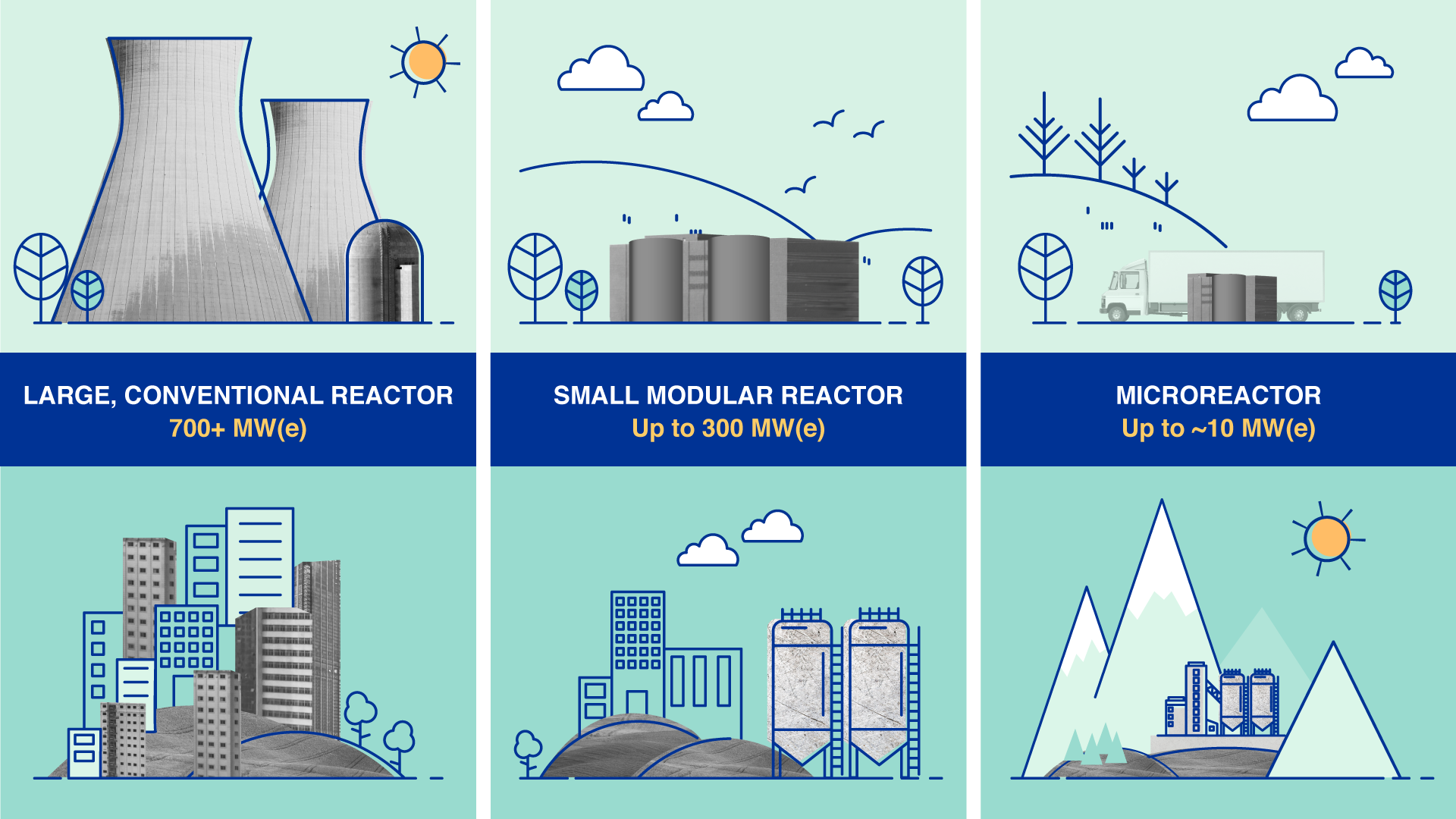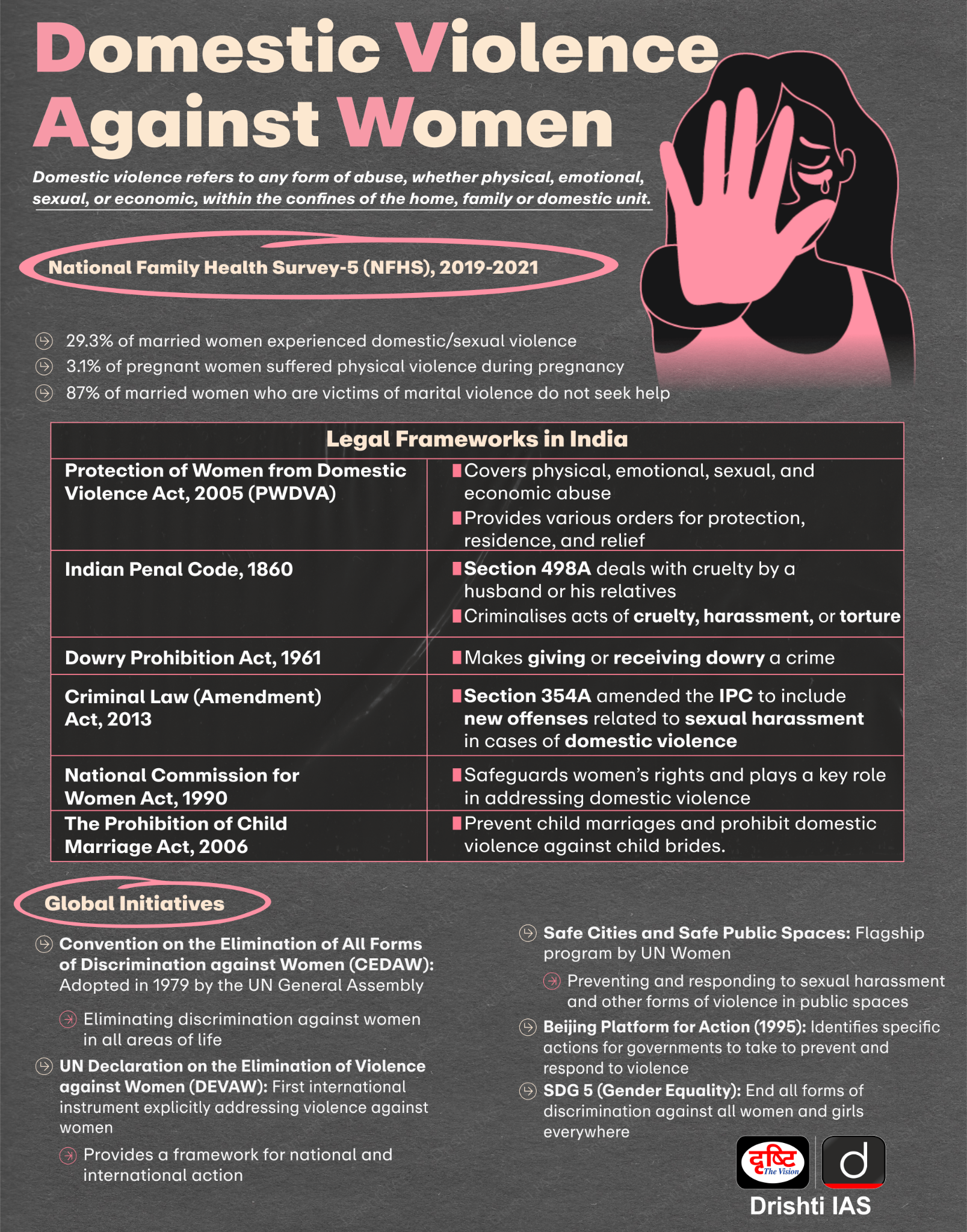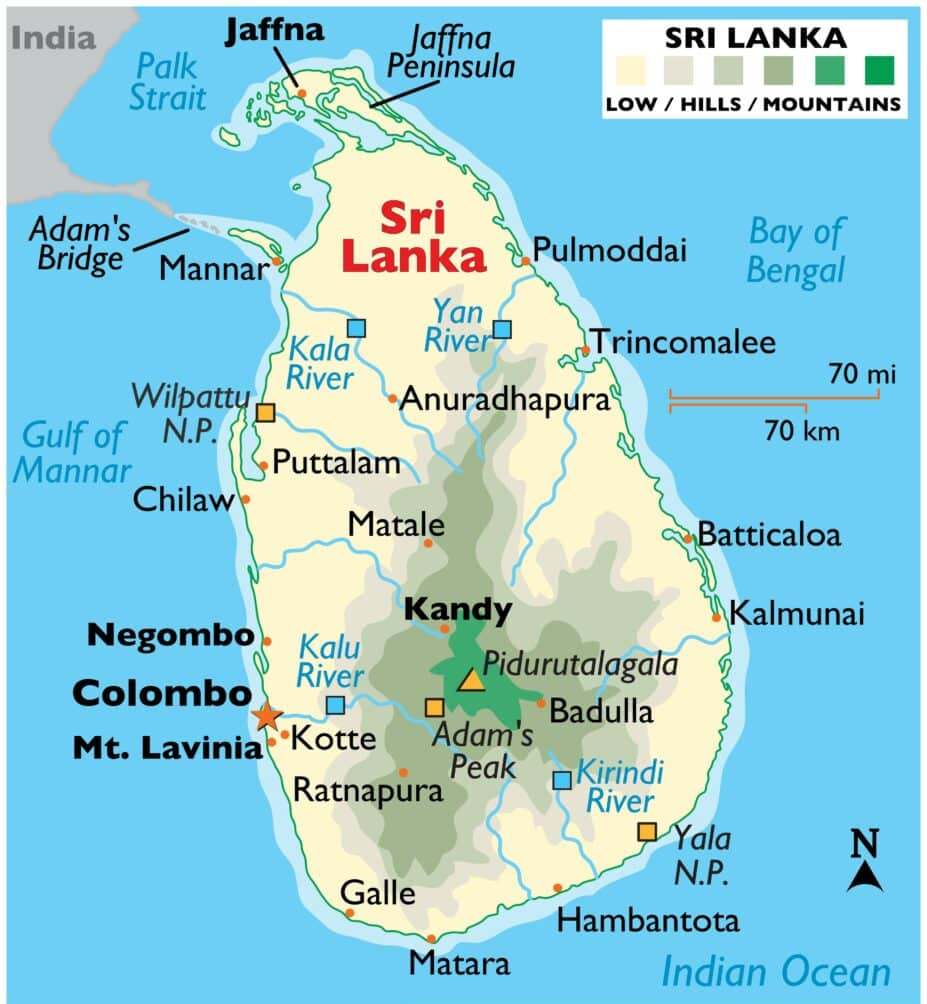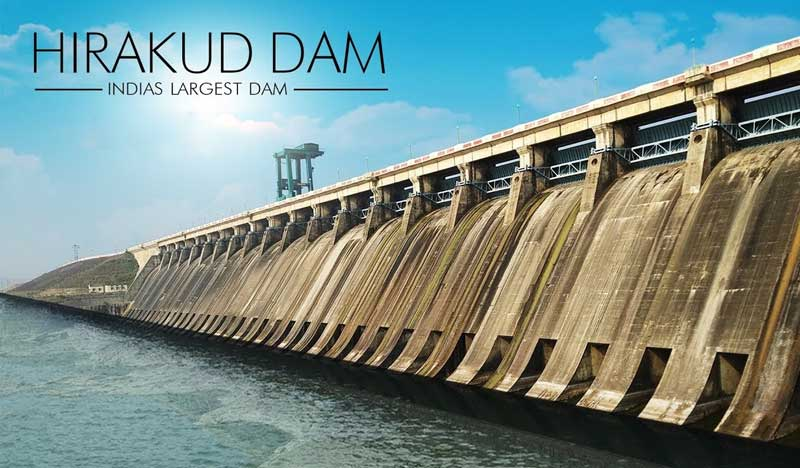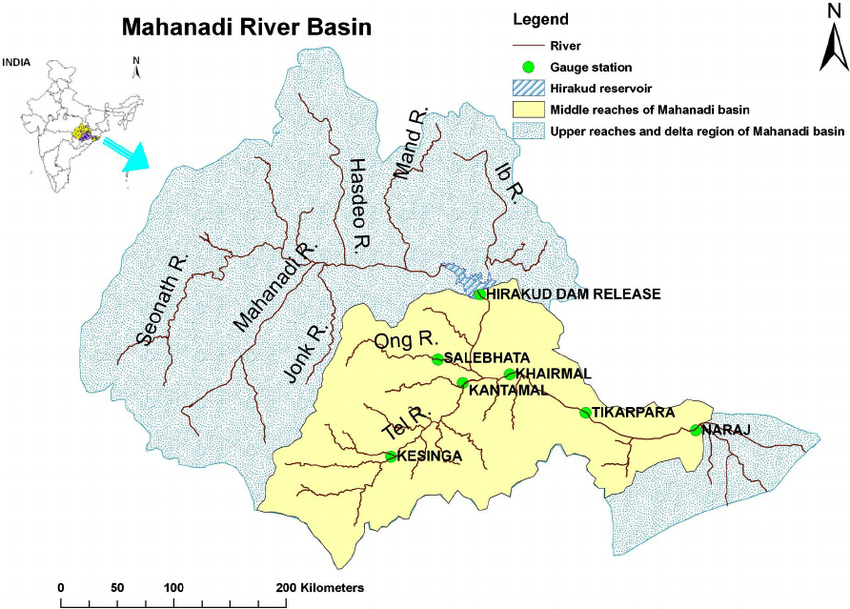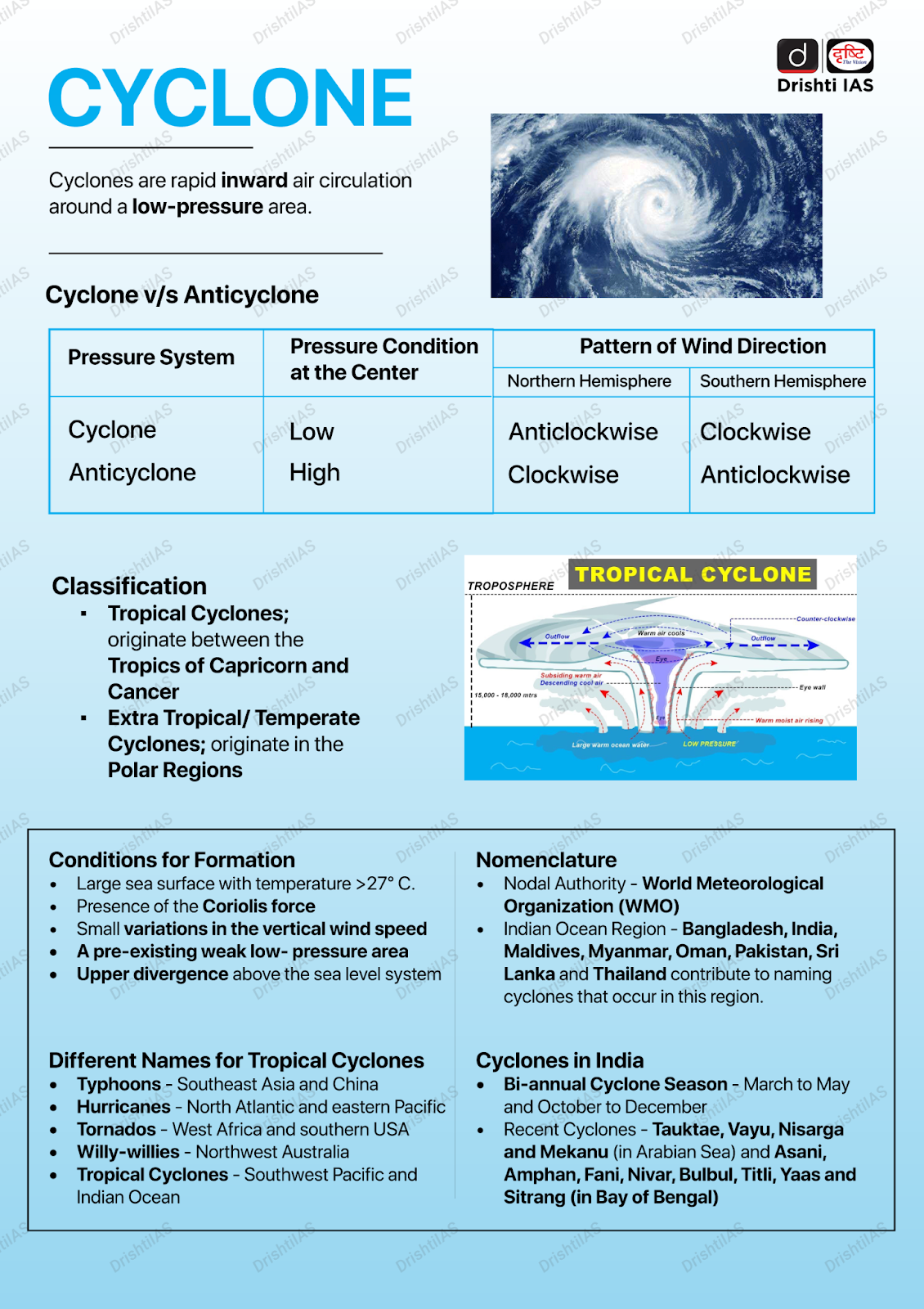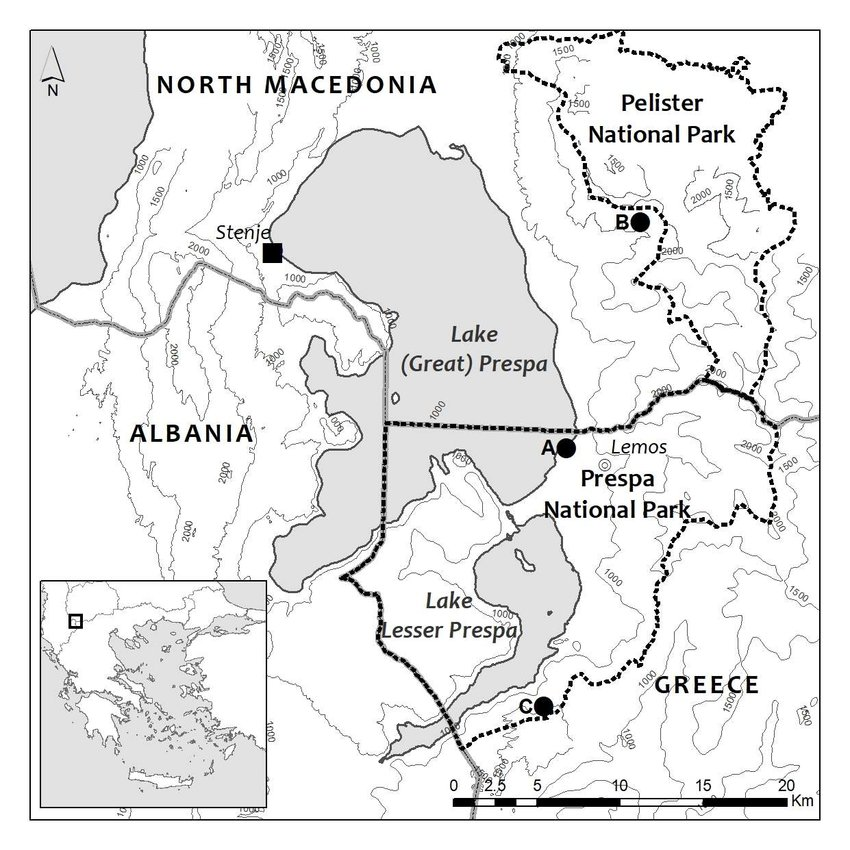International Relations
US-India Nuclear Cooperation and Small Modular Reactors
For Prelims: Small modular reactor, Uranium, Fossil fuels, Artificial Intelligence , India-U.S. Nuclear Deal, Nuclear Non-Proliferation Treaty , International Atomic Energy Agency
For Mains: Developments Related to India’s Nuclear Energy, Ways to Enhance India’s Nuclear Power Capacity.
Why in News?
Recent developments indicate a revitalization of the civil nuclear deal between India and the United States (US), with Holtec International's small modular reactor (SMR-300) at the forefront.
- Holtec aims to collaborate with India to meet energy demands of India and advance clean energy goals by utilising existing coal plant sites for SMR deployment and exploring joint manufacturing, thereby aligning with India’s clean energy transition objectives.
What is the SMR-300?
- About: The SMR-300 is an advanced pressurised light-water reactor that uses low-enriched uranium fuel to produce at least 300 megawatts (MWe) of electric power through fission.
- Compact Design: The SMR-300 requires significantly less land compared to traditional reactors, making it suitable for existing coal plant sites in India.
- Support for Clean Energy Transition: This technology is pivotal for India's clean energy goals, offering a competitive alternative to fossil fuels in the face of increasing energy demands, especially from technology sectors like Artificial Intelligence and data centres.
- By developing SMRs, India aims to position itself as a credible alternative in the global nuclear market, competing against established players like Russia and China.
- Challenges in Implementing SMR-300 in India:
- Civil Liability for Nuclear Damage Act, 2010: This legislation creates challenges for foreign nuclear suppliers by placing liability primarily on equipment manufacturers.
- As a result, many potential partners are hesitant to invest in India’s nuclear sector due to concerns about potential financial liabilities arising from accidents.
- Export Regulations: The US Atomic Energy Act of 1954 restricts US companies like Holtec from manufacturing nuclear equipment in India, complicating the potential for local production of SMR components.
- Legislative Limitations: India's existing legislative framework lacks the flexibility to amend liability laws, hindering smoother collaboration with foreign entities.
- Future Prospects for SMR-300 in India: Collaborating on SMR technology could enhance US-India ties, addressing both nations' technological constraints and labour cost challenges.
- Civil Liability for Nuclear Damage Act, 2010: This legislation creates challenges for foreign nuclear suppliers by placing liability primarily on equipment manufacturers.
India-US Nuclear Deal
- The India-US Nuclear Deal also known as the US-India Civil Nuclear Agreement, was signed in 2008. This agreement stemmed from a joint statement made in 2005 by then Indian Prime Minister Manmohan Singh and US President George W. Bush.
- The agreement aimed to facilitate civil nuclear cooperation between the two countries, marking a significant shift in US policy, which had previously restricted nuclear trade with India due to its non-signatory status to the Nuclear Non-Proliferation Treaty (NPT).
- The India-US nuclear deal, often referred to as the "123 Agreement," allows US companies to supply nuclear fuel and technology for India’s civilian nuclear energy program.
- As a part of India-US Nuclear Deal, India committed to allowing inspections from the International Atomic Energy Agency (IAEA) for its civilian nuclear program.
- Benefits to India: India gained eligibility to buy US dual-use nuclear technology, including materials and equipment for uranium enrichment and plutonium reprocessing.
- The deal was expected to enhance India’s energy security and help meet its growing energy demands through nuclear power.
What are Small Modular Reactors (SMRs)?
- About: According to the IAEA, small modular reactors (SMRs) are advanced nuclear reactors designed for enhanced safety and efficiency. Their power generation capacity typically ranges from less than 30 MWe to over 300 MWe.
- Features:
- Small: Physically smaller than conventional nuclear power reactors, allowing for flexible deployment in various locations.
- Modular: Designed for factory assembly, enabling transportation as a complete unit for easier installation.
- Reactors: Utilise nuclear fission to generate heat for electricity production or direct applications.
- Global Status of SMR Technology: Globally, there are over 80 SMR designs in various stages of development and licensing, with some already operational. These designs fall into several categories.
- Land-based Water-Cooled SMRs: Include designs like integral pressurised water reactors (PWRs) and boiling water reactors (BWRs) utilising mature technologies.
- Marine-Based Water-Cooled SMRs: Designed for deployment in marine environments, such as floating units installed on barges or ships.
- High-Temperature Gas-Cooled SMRs (HTGRs): Capable of producing heat over 750 degrees Celsius, making them efficient for electricity generation and various industrial applications.
- Liquid Metal-Cooled Fast Neutron Spectrum SMRs (LMFRs): Utilise fast neutron technology with coolants like sodium and lead.
- Molten Salt Reactor SMRs (MSRs): Employ molten fluoride or chloride salts as coolants, allowing for long fuel cycles and online refuelling capabilities.
- Microreactors (MRs): Extremely small SMRs designed to generate electrical power typically up to 10 MWe using various coolants.
Note:
- As of now, two SMR projects have reached the operational stage globally. Akademik Lomonosov floating power unit in Russia and high-temperature gas-cooled (HTGR) pebble-bed in China.
What are the Benefits and Challenges of SMRs?
| Benefits of SMRs | Challenges Associated with SMRs |
| SMRs can be scaled up or down to meet varying power needs. Can supplement existing power plants with zero-emission fuel or repurpose ageing thermal power stations. | Numerous SMR technologies have varying regulatory requirements. Prioritising the right technology and improving Technology Readiness Levels (TRLs) is crucial for large-scale deployment. |
| SMR-based power plants can refuel every 3 to 7 years, compared to 1 to 2 years for traditional plants, with some designed for up to 30 years without refuelling. | Supply chain issues are crucial for SMR competitiveness. More efforts are needed to build resilient global supply chains |
| SMRs utilise passive safety features that rely on physics to shut down and cool the reactor without needing power or human intervention, ensuring inherent safety. | SMRs generate radioactive waste requiring storage and disposal facilities, which can provoke socio-political resistance. |
| Can be integrated with renewable energy sources, providing low-carbon co-products. Mitigates fluctuations in energy supply on daily and seasonal bases. | Lack of experience with innovative designs complicates safety standard approval. Public opposition may arise from fears of nuclear disasters, necessitating effective awareness and engagement to address concerns. |
What are the Challenges in India’s SMR Development Aspirations?
- Technological Disparities: India’s current nuclear technology, primarily based on heavy water and natural uranium, is increasingly out of sync with the globally dominant light water reactors (LWRs).
- Transitioning to SMRs, which may utilise different fuel types, requires significant technological adaptation and expertise development.
- High External Costs: While SMRs are designed to be economically feasible, the associated costs of building safe reactors and managing spent nuclear fuel can significantly inflate project expenses, complicating economic viability.
- Regulatory Hurdles: Existing nuclear regulatory frameworks are primarily designed for large reactors, necessitating updates to accommodate SMR-specific features.
- The establishment of a comprehensive regulatory framework that addresses diverse SMR technologies and designs is crucial.
- Public Acceptance and Safety Perceptions: Lack of public familiarity with innovative SMR designs may lead to safety concerns and opposition due to fears of nuclear disasters like Chernobyl Disaster.
- Human Resource Development: Significant investment in infrastructure and manufacturing facilities is needed to support SMR deployment. India lacks a skilled workforce with expertise in SMR operations is essential for the technology's successful implementation and sustainability.
Way Forward
- India should construct SMR prototypes to validate designs and operational reliability. Aim for the first-of-a-kind SMR units to be operational by the early 2030s, facilitating the energy transition.
- Review and update existing nuclear regulations to accommodate innovative SMR designs. Establish a comprehensive regulatory framework under the Atomic Energy Regulatory Board to ensure safety standards.
- Develop innovative financing models, including green finance options, to attract private investment and mitigate project risks.
- Identify skill gaps and implement training programs for SMR operations through Bhabha Atomic Research Centre ( BARC).
- Develop strategies to strengthen nuclear supply chains for consistent SMR production. Integrate safeguards into SMR designs in collaboration with the IAEA and other countries to address non-proliferation concerns.
|
Drishti Mains Question: What challenges does India face in transitioning to small modular reactor (SMR) technology, and what steps should the government take to promote their successful deployment? |
UPSC Civil Services Examination, Previous Year Questions (PYQs)
Prelims
Q. The function of heavy water in a nuclear reactor is to (2011)
(a) Slow down the speed of neutrons
(b) Increase the speed of neutrons
(c) Cool down the reactor
(d) Stop the nuclear reaction
Ans: (a)
Mains
Q. With growing energy needs should India keep on expanding its nuclear energy programme? Discuss the facts and fears associated with nuclear energy. (2018)

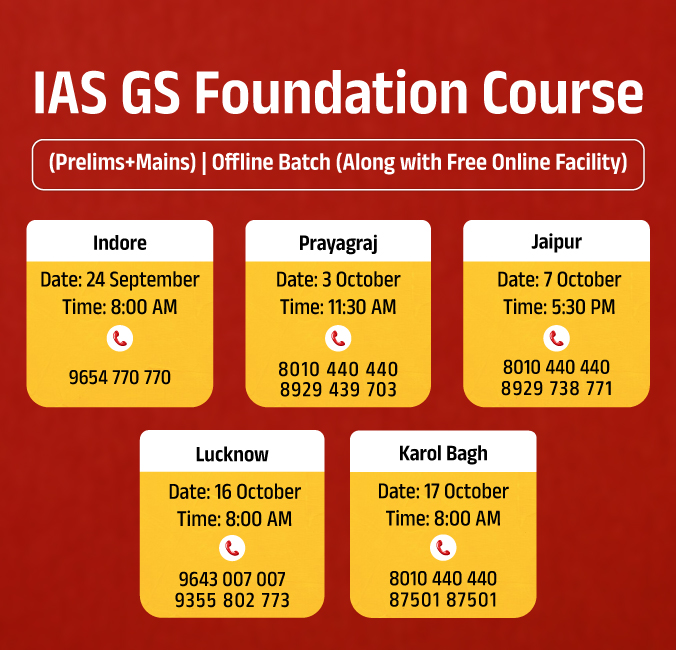
Indian Economy
Rationalisation of Agriculture Schemes and Oilseeds Mission
For Prelims: National Mission on Edible Oils–Oilseeds, Pradhan Mantri Rashtriya Krishi Vikas Yojana (PM-RKVY), Krishonnati Yojana (KY), Agroforestry, Food Security, Climate Resilient Agriculture, Nutrition Security, Atmanirbhar Bharat, NMEO-OP (Oil Palm), Intercropping, Genome Editing, SATHI Portal, FPOs, Minimum Support Price (MSP), Pradhan Mantri Annadata Aay Sanrakshan Abhiyan (PM-AASHA).
For Mains: Significance of rationalisation of agricultural schemes and implementation of National Mission on Edible Oils – Oilseeds (NMEO-Oilseeds) for self sufficiency in oilseeds.
Why in News?
Recently, the Union cabinet rationalised 18 centrally sponsored schemes and approved the National Mission on Edible Oils–Oilseeds (NMEO-Oilseeds).
What are the Key Facts Regarding Rationalisation of Schemes?
- Categorisation of Schemes: All Centrally Sponsored Schemes (CSS) under the Ministry of Agriculture and Farmers' Welfare into two umbrella schemes namely the Pradhan Mantri Rashtriya Krishi Vikas Yojana (PM-RKVY) and the Krishonnati Yojana (KY).
- Key Features of the Schemes:
- PM-RKVY: This scheme aims to promote sustainable agriculture practices across the country.
- It encompasses various initiatives, including soil health management, rainfed area development, agroforestry, crop diversification among others.
- The PM-RKVY comprises the following schemes: Soil Health Management, Rainfed Area Development, Agro-Forestry, Paramparagat Krishi Vikas Yojana, Agricultural Mechanization including Crop Residue Management, Per Drop More Crop, Crop Diversification Programme, RKVY DPR component, Accelerator Fund for Agri Startups.
- Krishonnati Yojana (KY): It will address food security and agricultural self-sufficiency.
- PM-RKVY: This scheme aims to promote sustainable agriculture practices across the country.
- Comprehensive Strategic Document: The States are given an opportunity to prepare a Comprehensive Strategic Document for their agriculture sector.
- It focuses on improving crop production and productivity while addressing climate resilient agriculture and developing value chains for agricultural products.
- Objective of Rationalisation:
- Efficiency and Integration: Avoid duplication of efforts and ensure convergence for a more integrated approach to agricultural initiatives.
- Emerging Agricultural Challenges: Focus on emergent challenges of agriculture like nutrition security, sustainability, climate resilience, value chain development and private sector participation.
- State-Specific Strategic Planning: States will have the freedom to draft strategic plans tailored to their specific agricultural needs.
- Streamlined Approval Process: Annual Action Plan (AAP) of States can be approved in one go rather than approving individual scheme-wise AAPs.
What are the Key Facts Regarding NMEO-Oilseeds?
- About NMEO-Oilseeds: It has been launched by the Ministry of Agriculture & Farmers Welfare for enhancing domestic oilseed production to reduce dependency on edible oil imports.
- It aligns with the broader goal of Atmanirbhar Bharat (self-reliant India) and focuses on boosting both primary and secondary oilseed production in the country.
- Duration: The mission will be implemented over a seven-year period, from 2024-25 to 2030-31.
- Objective: Together with NMEO-OP (Oil Palm), the mission targets to increase domestic edible oil production to 25.45 million tonnes by 2030-31, meeting around 72% of India’s projected domestic requirement.
- It seeks to expand oilseed cultivation by an additional 40 lakh hectares by targeting rice and potato fallow lands, promoting intercropping, and promoting crop diversification.
- NMEO-OP (Oil Palm) aims to increase crude palm oil production by 11.20 lakh tonnes by 2025-26.
- Key Focus Areas:
- Production of Primary Oilseed Crops: It focuses on enhancing the production of key primary oilseed crops such as rapeseed-mustard, groundnut, soybean, sunflower, and sesamum.
- It aims to raise primary oilseed production from 39 million tonnes in 2022-23 to 69.7 million tonnes by 2030-31.
- Extraction from Secondary Sources: It aims at increasing collection and extraction efficiency from secondary sources like Cottonseed, Rice Bran, and Tree Borne Oils.
- Technological Interventions: Cutting-edge technologies, such as genome editing, will be leveraged to develop high-quality seeds and enhance productivity.
- Production of Primary Oilseed Crops: It focuses on enhancing the production of key primary oilseed crops such as rapeseed-mustard, groundnut, soybean, sunflower, and sesamum.
- SATHI Portal for Seed Management: A 5-year rolling seed plan will be introduced via the Seed Authentication, Traceability & Holistic Inventory (SATHI) Portal.
- This will help states establish tie-ups with seed-producing agencies (FPOs, cooperatives, and seed corporations).
- 65 new seed hubs and 50 seed storage units will be set up in the public sector to improve the seed production infrastructure.
- Value Chain Clusters: Over 600 Value Chain Clusters will be developed across 347 districts, covering more than 10 lakh hectares annually.
- Farmers in these clusters will have access to high-quality seeds, Good Agricultural Practices (GAP) training, and advisory services on weather and pest management.
- Value Chain Clusters are networks of interconnected businesses, suppliers, and institutions within a specific industry that collaborate to improve productivity, innovation, and competitiveness.
- Post-Harvest Support: Support will be extended to FPOs, cooperatives, and industry players to establish or upgrade post-harvest units to enhance recovery from cottonseed, rice bran, corn oil, and Tree-Borne Oils (TBOs).
What are Key Highlights of India’s Oilseed Production?
- Oilseed Production: India ranks as the fourth largest oilseed producer in the world. India has 20.8% of the global area under oilseed cultivation, contributing 10% of global production.
- In 2022-23, production reached a record 413.55 lakh tonnes, 33.92 lakh tonnes higher than the previous year.
- India produces a variety of oilseeds including Groundnut, Soybean, Sunflower, Sesamum, Niger Seed, Mustard, and Safflower.
- Rainfed Farming: Nearly 72% of India's oilseed cultivation is limited to rainfed farming, predominantly carried out by small farmers, leading to low productivity.
- Major Oilseed-Producing States: Rajasthan, Madhya Pradesh, Gujarat, and Maharashtra were the leading producers in 2021-22, contributing 23%, 21%, 18%, and 16%, respectively.
- Oilseed Export: In 2022-23, In 2022-23, the oilseed exports amounted to USD 1.33 billion.
- Major export destinations include Indonesia, Vietnam, Philippines, Malaysia, Thailand, UAE and Bangladesh.
- Oilseed Imports: India is heavily reliant on imports of oilseed which account for 57% of its domestic demand for edible oils.
What are Previous Measures to Promote Oilseed Production?
- National Mission on Edible Oils-Oil Palm (NMEO-OP): NMEO-OP was launched in 2021 to increase the area of oil palm to 10 lakh hectares by 2025-26 with a special focus on North Eastern states.
- It aims to increase crude palm oil production to 11.20 lakh tonnes by 2025-26.
- Increase consumer awareness to maintain consumption level of 19 kg/person/annum till 2025-26.
- MSP for Oilseeds: The Minimum Support Price (MSP) for mandated edible oilseeds has been increased, and schemes like Pradhan Mantri Annadata Aay Sanrakshan Abhiyan (PM-AASHA) ensure that oilseed farmers receive fair prices.
- Import Duty Protection: 20% import duty on edible oils has been imposed to protect domestic producers from cheap imports and encourage local cultivation.
Conclusion
The rationalisation of centrally sponsored schemes and the launch of the NMEO-Oilseeds aim to streamline agricultural efforts, enhance oilseed production, and reduce import dependence. By integrating modern technology, expanding cultivation, and supporting post-harvest infrastructure, these initiatives align with India's goal of achieving self-sufficiency in edible oils.
|
Drishti Mains Question: How can the National Mission on Edible Oils – Oilseeds (NMEO-Oilseeds) help India become self-reliant in oilseed production? |
UPSC Civil Services Examination, Previous Year Question (PYQ)
Prelims
Q. In the context of India’s preparation for Climate-Smart Agriculture, consider the following statements: (2021)
- The ‘Climate-Smart Village’ approach in India is a part of a project led by the Climate Change,
- Agriculture and Food Security (CCAFS), an international research programme.
- The project of CCAFS is carried out under Consultative Group on International Agricultural Research (CGIAR) headquartered in France.
- The International Crops Research Institute for the Semi-Arid Tropics (ICRISAT) in India is one of the CGIAR’s research centres.
Which of the statements given above are correct?
(a) 1 and 2 only
(b) 2 and 3 only
(c) 1 and 3 only
(d) 1, 2 and 3
Ans: (d)
Q. Consider the following statements: (2020)
- In the case of all cereals, pulses and oil-seeds, the procurement at Minimum Support Price (MSP) is unlimited in any State/UT of India.
- In the case of cereals and pulses, the MSP is fixed in any State/UT at a level to which the market price will never rise.
Which of the statements given above is/are correct?
(a) 1 only
(b) 2 only
(c) Both 1 and 2
(d) Neither 1 nor 2
Ans: (d)
Mains
Q. What are the present challenges before crop diversification? How do emerging technologies provide an opportunity for crop diversification?


Social Justice
Misuse of Section 498A of IPC and Domestic Violence Act 2005
For Prelims: Supreme Court, Section 498A Indian Penal Code, Domestic Violence Act 2005, Section 84 of Bhartiya Nyaya Sanhita, 2023 (BNS), cognizable and non-bailable,
For Mains: Misuse of Domestic Laws and related issues, Need of Gender Just Law.
Why in News?
Recently, the Supreme Court observed that Section 498A Indian Penal Code (now Bharatiya Nyaya Sanhita) and Domestic Violence Act 2005 are among the most abused laws.
What is Section 498A Indian Penal Code?
- Section 498A of the Indian Penal Code (IPC) deals with the criminal offence of cruelty against a married woman by her husband or his relatives. The section was introduced in 1983.
- Section 84 of Bhartiya Nyaya Sanhita, 2023 (BNS) deals with the same provision.
- Punishment:
- The offender can face up to three years in jail and may also be liable to pay a fine.
- Definition of cruelty:
- Cruelty is defined as any willful conduct that is likely to cause grave injury or danger to the woman's life, limb, or health, or drive her to commit suicide.
- Filing a complaint:
- A complaint can be filed by the aggrieved woman, or by any person related to her by blood, marriage, or adoption. If there are no such relatives, a public servant notified by the state government can file the complaint.
- Time limit: A complaint must be filed within three years of the alleged incident.
- Cognizability and non-bailability: The offence is cognizable and non-bailable, which means that immediate custody of the accused is possible.
What is the Domestic Violence Act 2005?
- Objective:
- The Protection of Women from Domestic Violence Act, 2005, was enacted to provide a comprehensive legal framework for the protection of women against domestic violence, recognizing violence in both physical and psychological forms within familial settings.
- Definition of Domestic Violence:
- The Act broadly defines domestic violence to include physical, emotional, sexual, verbal, and economic abuse.
- It covers any harm or injury to the well-being of a woman or threat thereof, including coercion, harassment, and denial of resources or entitlements.
- Scope and Coverage:
- It covers all women in domestic relationships, including wives, mothers, sisters, daughters, and live-in partners.
- It protects women from violence by husbands, male partners, relatives, or other members of the household.
- Right to Residence:
- The Act provides women the right to reside in the shared household, regardless of their legal ownership or title to the property.
- Protection Orders:
- Victims of domestic violence can approach the court for protection orders, which prevent the abuser from committing further acts of violence, entering the victim’s place of work or residence, or engaging in any form of communication or contact with the victim.
- Monetary Relief and Compensation:
- The Act enables women to claim financial compensation for the injuries suffered, including medical expenses, loss of earnings, or any other financial loss resulting from domestic violence. Courts can also direct the payment of maintenance to the victim.
- Counselling and Support Services:
- It mandates the provision of support services, including legal aid, counselling, medical facilities, and shelter homes (under schemes like National Legal Services Authority) for women seeking protection under the Act.
- Speedy Judicial Process:
- The Act ensures a time-bound process for the resolution of domestic violence cases.
- Magistrates are required to dispose of complaints within 60 days, ensuring timely intervention and relief for the victim.
- Role of Non-Governmental Organisations (NGOs):
- Recognising the crucial role of civil society, the Act allows NGOs and women’s organisations to assist in filing complaints and providing protection and support to victims.
What are the Factors Contributing to Domestic Violence?
- Patriarchal Social Structure: Deep-rooted patriarchal norms perpetuate gender inequality, reinforcing male dominance and control over women. This leads to the normalisation of violence as a means to assert authority within households.
- Cultural and Societal Norms: In many societies, domestic violence is tacitly accepted or overlooked, particularly when it occurs in private spaces.
- Cultural beliefs often discourage women from speaking out or seeking help, reinforcing the cycle of abuse.
- Economic Dependency: Financial dependency on male family members often forces women to endure domestic violence. The lack of economic autonomy limits their ability to leave abusive relationships or seek legal recourse.
- Substance Abuse: Alcohol and drug abuse are significant contributors to domestic violence.
- Intoxicated individuals may display aggressive behaviour, leading to physical or emotional abuse within families.
- Lack of Education and Awareness: Limited education and awareness about legal rights and support mechanisms contribute to the perpetuation of domestic violence.
- Psychological Factors: Issues such as anger management problems, low self-esteem, or unresolved trauma may cause individuals to engage in violent behaviour against their family members. Abusers may also justify their actions through distorted perceptions of control and entitlement.
- Dowry and Marital Disputes: Dowry-related violence remains a significant factor in domestic abuse. Disputes over dowry demands or dissatisfaction with the marriage often lead to emotional or physical violence against women.
- Intergenerational Transmission of Violence: Children who witness domestic violence in their households are more likely to replicate abusive behaviours in their own relationships as adults, perpetuating a cycle of violence across generations.
- Weak Law Enforcement and Judicial Delays: Ineffective law enforcement, delayed justice, and lack of stringent penalties for perpetrators contribute to the recurrence of domestic violence.
- Victims may feel discouraged from seeking legal protection due to fear of retaliation or mistrust in the system.
How are these Legal Measures Misused?
- False Allegations for Personal Gain: Both the Domestic Violence Act, 2005, and Section 498A are sometimes misused by filing false complaints to harass husbands and their families.
- These provisions are exploited as tools for personal vendetta or to gain leverage in matrimonial disputes, including property settlements, maintenance claims, or custody battles.
- Coercion for Financial Settlements: In several instances, false cases are used to coerce husbands and their relatives into making large financial settlements or paying alimony.
- The fear of arrest or prolonged legal battles often compels the accused to concede to unreasonable demands.
- Immediate Arrest and Lack of Preliminary Investigation: Section 498A is a non-bailable and cognizable offence, leading to immediate arrests without the need for prior investigation.
- This provision has been exploited to pressurize the accused, resulting in wrongful detentions and damaging reputations before guilt is even established.
- Social and Psychological Damage to the Accused: The stigma associated with domestic violence allegations can cause irreparable harm to the social standing, mental health, and professional life of the accused.
- Even if acquitted, the accused may suffer long-term consequences due to the negative perception attached to the charges.
- Judicial Observations on Misuse: Courts in various judgments have acknowledged the misuse of Section 498A and the Domestic Violence Act.
- In response, the judiciary has called for reforms, including the need for proper investigation before arrests and imposing penalties for filing frivolous or malicious cases.
Way Forward
- There is a need to establish clear distinctions between bailable and non-cognizable offenses within the law. Thorough investigations should be conducted prior to making any arrests.
- The principle of proportionality should be applied when arresting family members, considering the extent of harm caused to women.
- Individuals should be held accountable for false and misleading complaints.
- India must implement gender-just laws (recognising domestic violence against men as well) that promote equality and protect the rights of every individual, regardless of gender.
- Establishing legal frameworks that tackle discrimination, violence, and economic disparities is vital for creating an inclusive society.
|
Drishti Mains Question: Discuss the potential benefits and challenges associated with implementing Gender neutral laws in the context of achieving gender equality. |
UPSC Civil Services Examination, Previous Year Question (PYQ)
Mains
Q. We are witnessing increasing instances of sexual violence against women in the country. Despite existing legal provisions against it, the number of such incidences is on the rise. Suggest some innovative measures to tackle this menace. (2014)
Q. ‘Women’s movement in India has not addressed the issues of women of lower social strata.’ Substantiate your view. (2018)


International Relations
Strengthening Ties between India and Srilanka
For Prelims: India-Sri Lanka Relations, Unified Payments Interface (UPI), Buddhism, Renewable energy, Indian Ocean, 13th Amendment, The Liberation Tigers of Tamil Eelam (LTTE)
For Mains: India Sri Lanka Relations, Bilateral, regional, and global groupings and agreements involving India and/or affecting India’s interests.
Why in News
Recently, the External Affairs Minister S. Jaishankar met with Sri Lanka's newly elected President Anura Kumara Dissanayake in Colombo, during which he pledged India's full support for the country's economic recovery and growth.
- Additionally, this meeting marked Jaishankar as the first high-level foreign dignitary to meet with him after the election.
What are the Key Highlights of the Meeting Between India and Sri Lanka?
- Economic Support:
- During the meeting, India emphasised India's commitment to sectors such as tourism, energy, and dairy, while discussing boosting Indian tourist inflow to support Sri Lanka's economy.
- India also recognized Sri Lanka's gratitude for its assistance during the financial crisis.
- Fishermen and Security Concerns:
- India and Sri Lanka acknowledged the issue of detained Indian fishermen, emphasizing the need for their release, a review of fines, and addressing the seizure of assets such as boats.
- Support for Tamil Rights:
- India reiterated its support for the aspirations of all communities in Sri Lanka, emphasizing the need for political solutions for Tamils and the implementation of the 13th Amendment.
- The 13th Amendment established Provincial Councils, ensuring a power-sharing framework that allows all nine provinces, including those with a Sinhala majority, to exercise self-governance.
- India reiterated its support for the aspirations of all communities in Sri Lanka, emphasizing the need for political solutions for Tamils and the implementation of the 13th Amendment.
What is the Historical Context of India-Sri Lanka Relations?
- In the 3rd century BCE, Mahinda, the son of Emperor Ashoka, introduced Buddhism to Sri Lanka, forging a strong cultural and religious connection between the two nations.
- During the 10th century CE, the Chola dynasty from South India invaded Sri Lanka several times, leaving a lasting cultural impact that shaped Sri Lankan art, architecture, and language.
- Both India and Sri Lanka achieved independence from British colonial rule in 1947 and 1948, respectively, with India playing a vital role in helping Sri Lanka develop its democratic institutions.
- The Liberation Tigers of Tamil Eelam (LTTE) (a terrorist organisation) were formed in 1976 and engaged in armed conflict with the Sri Lankan government from 1983 to 2009.
- In response to the conflict, India and Sri Lanka signed the 1987 India-Sri Lanka Agreement, which led to the implementation of the 13th Amendment and the deployment of the Indian Peace Keeping Force (IPKF) to Sri Lanka.
- The Sri Lankan Civil War came to an end in 2009 following a military offensive.
What are the Major Areas of Cooperation Between India and Sri Lanka?
- Development Cooperation: India is a significant provider of development aid to Sri Lanka, committing nearly USD 4 billion, including around USD 560 million in grants.
- Notable initiatives include the Indian Housing Project, which aims to build 50,000 homes for war-affected communities. Additional support includes electricity projects, railway development, and various community development initiatives.
- In 2022, India agreed to set up hybrid power projects in northern Sri Lanka and initiated development projects at Kankesanthurai and Trincomalee ports.
- Notable initiatives include the Indian Housing Project, which aims to build 50,000 homes for war-affected communities. Additional support includes electricity projects, railway development, and various community development initiatives.
- Economic Cooperation: India and Sri Lanka have strengthened economic ties through the India-Sri Lanka Free Trade Agreement (ISFTA), with India being Sri Lanka's third-largest export destination and over 60% of exports benefiting from the agreement.
- They are also exploring an Economic and Technology Cooperation Agreement (ETCA) to further strengthen their economies.
- Sri Lanka's adoption of India's Unified Payments Interface (UPI) has improved fintech connections, and using the rupee for trade supports its economy.
- Cultural Relations: The 1977 Cultural Cooperation Agreement has enabled cultural exchanges, while the Indian Cultural Centre in Colombo promotes Indian arts and organizes International Yoga Day.
- Additionally, the India-Sri Lanka Foundation, established in 1998, strengthens scientific and cultural collaboration
- Defence and Security Cooperation: Since 2012, India has been involved in the Indo-Sri Lankan Defence Dialogue, focusing on security partnerships. Both nations conduct joint military (Mitra Shakti) and naval (SLINEX) exercises to enhance their defence collaboration.
- India is providing support through a free-floating dock facility, a Dornier reconnaissance aircraft, and a training team, all aimed at bolstering security in the Indian Ocean region.
- Multilateral Cooperation: Both countries actively participate in regional organisations such as BIMSTEC (Bay of Bengal Initiative for Multi-Sectoral Technical and Economic Cooperation) and SAARC as well as international bodies like the United Nations and the World Trade Organization.
What are the Challenges in India-Sri Lanka Relations?
- Political Instability: Sri Lanka has faced political turbulence in recent years, characterised by frequent government changes, which has impeded its ability to engage with India and pursue cooperative economic initiatives.
- Geographical Concerns: India recognises Sri Lanka's sovereignty over Katchatheevu under the 1974 agreement, but political commentary over the island and the authenticity of the agreement raise diplomatic concerns between the countries.
- Strategic Concerns: China's establishment of the Colombo and Hambantota ports under its Maritime Silk Route initiative poses strategic challenges for India. Moreover, China has partnered with Sri Lanka’s Supreme SAT for satellite launch operations.
- Fishermen's Issue: Sri Lanka has consistently voiced concerns over illegal fishing by Indian fishermen in its waters, resulting in regular arrests for violating the International Maritime Boundary Line (IMBL).
- Tamilian Interests: India seeks to fulfil the Tamil community's aspirations for equality, justice, and peace, promoting the devolution of powers as outlined in the 13th Amendment. However, Colombo has yet to demonstrate a firm commitment in this regard.
- Border Security Concern: The porous maritime border between India and Sri Lanka has resulted in challenges related to border security, including the smuggling of goods, narcotics, and illegal immigrants.
Way Forward
- Enhanced Maritime Security: India and Sri Lanka can strengthen maritime security collaboration through joint patrols in the Indian Ocean and by offering training programs for Sri Lankan coast guard personnel.
- Cultural Exchange: Cultural exchange initiatives, people-to-people connections and tourism can be promoted to deepen relationships between the citizens of both nations.
- Initiatives such as student exchange programs and skill development can be established to provide scholarships for Sri Lankan students and to collaborate on skill development programs.
- Developmental Projects: India can invest in infrastructure development in Sri Lanka, ensuring that projects transition smoothly from planning to execution.
- Trade Facilitation: Both countries can aim for a prompt and efficient implementation of the Economic and Technology Co-operation Agreement (ETCA) to lower trade barriers and enhance bilateral trade.
- Truth and Reconciliation Commission: India could help set up a truth and reconciliation commission in Sri Lanka, similar to South Africa's, to address the legacy of the civil war and promote healing within the Tamil community.
|
Drishti Mains Question: What are the key highlights of India-Sri Lanka relations, the challenges they face, and how can both countries collaborate to overcome these issues? |
UPSC Civil Services Examination, Previous Year Questions (PYQs)
Prelims
Q1. Elephant Pass, sometimes seen in the news, is mentioned in the context of the affairs of which one of the following? (2009)
(a) Bangladesh
(b) India
(c) Nepal
(d) Sri Lanka
Ans: (d)
Mains
Q. ‘India is an age-old friend of Sri Lanka.’ Discuss India's role in the recent crisis in Sri Lanka in the light of the preceding statement. (2022)
Q. In respect of India-Sri Lanka relations, discuss how domestic factors influence foreign policy. (2013)


Important Facts For Prelims
Hirakud Dam Canal System Renovation
Why in News?
The six-decade-old canal system connected to Odisha's Hirakud Dam is set for a major renovation.
- This initiative aims to modernise irrigation infrastructure, reduce water wastage, and enhance agricultural productivity, providing much-needed support to farmers in the region.
What are the Key Objectives of the Renovation?
- Need for Renovation: Many canal infrastructures, including the Bargarh and Sasan main canals, are in disrepair.
- Existing earthen canals cause significant water loss, reducing irrigation efficiency.
- Water seepage makes some farmland unsuitable for farming, complicating challenges for local farmers.
- Key Features of the Renovation: Conversion of all earthen water courses to concrete paths for improved water distribution and management.
- The project will enhance water availability in tail-end areas for better farmer access.
- Impact on Local Farmers: Aims to reduce the gap between irrigation potential and actual usage. Enhanced irrigation capabilities will benefit farmers and increase crop yields.
What are the Key Facts About the Hirakud Dam?
- About: It is a multipurpose scheme conceived by Er. M. Visveswaraya in 1937, after a recurrence of devastating floods in the Mahanadi River.
- Built around 1952-53, the Hirakud Dam is one of India’s first major multipurpose river valley projects post-independence.
- It holds the title for the longest major earthen dam globally, stretching 25.8 km across the Mahanadi River.
- It was inaugurated by the then Prime Minister Jawaharlal Nehru in 1957.
- Hirakud Dam forms the Hirakud Reservoir, also known as Hirakud Lake, is one of the largest artificial lakes in Asia. Hirakud Reservoir was declared a Ramsar site in 2021.
- Purpose and Benefits: The dam has an installed capacity of 359.8 MW for hydroelectric power generation, contributing to the region's energy supply.
- The reservoir irrigates 436,000 hectares of land, benefiting farmers in the region.
- Cattle Island: It is located in one of the extreme points of Hirakud Reservoir. It is inhabited by a large herd of wild cattle.
Mahanadi River
- Origin: The river originates from Sihawa range of hills in the Dhamtari district of Chhattisgarh.
- Mouth: It flows into the Bay of Bengal at False Point, Jagatsinghpur in Odisha.
- Tributaries:
- Left Bank: Seonath, Mand, Ib, Hasdeo, and Kelo.
- Right Bank: Ong, Parry, Jonk, and Telen.
- Basin and Geography: The Mahanadi basin extends over states of Chhattisgarh and Odisha and comparatively smaller portions of Jharkhand, Maharashtra and Madhya Pradesh.
- It is bounded by the Central India hills on the north, by the Eastern Ghats on the south and east and by the Maikala range on the west.
- The Mahanadi is one of the major rivers of the country and among the peninsular rivers, in water potential and flood producing capacity, it ranks second to the Godavari.


Important Facts For Prelims
Typhoons in Southeast Asia
Why in News?
According to a study published in the journal Climate and Atmospheric Science in July 2024, typhoons are occurring frequently in Southeast Asia due to the rising global temperatures.
What are Typhoons?
- A typhoon is a form of cyclone that has wind speeds of 119 kmph and above and develops over warm ocean waters near the equator.
- When warm, moist air rises from the ocean surface, it creates a low-pressure area.
- Cyclones are rapid inward air circulation around a low-pressure area.
- The air circulates in an anticlockwise direction in the Northern hemisphere and clockwise in the Southern hemisphere.
| Cyclones Type | Location |
| Typhoon | China Sea and Pacific Ocean |
| Hurricane | West Indian islands, Caribbean Sea, Atlantic Ocean |
| Tornado | Guinea lands of West Africa, southern USA |
| Willy-willies | North-western Australia |
| Tropical Cyclone | Indian Ocean Region |
Recent Typhoons in Southeast Asia
- Typhoon Yagi: It is the strongest tropical cyclone Asia has encountered till September 2024 and the second most powerful globally after Hurricane Beryl (Atlantic Ocean).
- It has caused severe damage across Southeast Asia, affecting the Philippines, China, Laos, Myanmar, Thailand, and particularly Vietnam.
- Typhoon Shanshan: It has hit Japan bringing heavy rains and strong winds.
- Typhoon Bebinca: It has top wind speeds of 151 kph (94 mph) near its eye, and reached category 1 storm on the Saffir-Simpson Hurricane Wind Scale.
Why are Typhoons Occurring Frequently in Southeast Asia?
- Rising Sea Surface Temperatures:
- Due to global warming. Warmer waters in the Pacific Ocean provide more energy for the formation and intensification of typhoons.
- Tropical storms draw their strength from warm, moist ocean air, and the rising sea surface temperature leads to more frequent and severe storms.
- Changes in Atmospheric Circulation Patterns:
- Shifts in atmospheric circulation patterns, such as the weakening or alteration of the Walker Circulation (which influences the Pacific Ocean), can affect the frequency and trajectory of typhoons in Southeast Asia.
- El Niño and La Niña Events:
- The El Niño-Southern Oscillation (ENSO) cycle significantly impacts typhoon frequency.
- During El Niño years, the warmer waters of the central and eastern Pacific shift westward, which can increase typhoon activity in Southeast Asia.
- La Niña years also contribute to this by enhancing cyclone activity in the Western Pacific.
- The El Niño-Southern Oscillation (ENSO) cycle significantly impacts typhoon frequency.
- Increased Moisture in the Atmosphere:
- Rising global temperatures lead to more evaporation from the oceans, increasing moisture content in the atmosphere. This moisture fuels stronger and more frequent typhoons as it enhances the storm's intensity and precipitation rates.
- Geographical Location of Southeast Asia:
- The region lies in the path of the Pacific Ocean's warm currents and is a natural hotspot for typhoon formation.
- The geography of Southeast Asia, with its long coastlines and proximity to the Western Pacific, makes it highly vulnerable to tropical cyclones.
- Marine Heat Waves:
- More frequent marine heat waves, driven by climate change, are causing extreme warming events in the ocean.
- Weaker Land-Sea Temperature Differences:
- Climate change is also altering the temperature gradient between land and sea.
- Weaker differences between the land and the sea can lead to slower storm dissipation, which makes the typhoons last longer and impact areas more severely.
- Urbanisation and Environmental Degradation:
- Rapid urbanization, deforestation, and destruction of coastal ecosystems, such as mangroves, which serve as natural buffers, can exacerbate the effects of typhoons.
UPSC Civil Services Examination, Previous Year Question (PYQ)
Q. Consider the following statements: (2020)
- Jet streams occur in the Northern Hemisphere only.
- Only some cyclones develop an eye.
- The temperature inside the eye of a cyclone is nearly 10ºC lesser than that of the surroundings.
Which of the statements given above is/are correct?
(a) 1 only
(b) 2 and 3 only
(c) 2 only
(d) 1 and 3 only
Ans: (c)
Q. In the context of which of the following do some scientists suggest the use of cirrus cloud thinning technique and the injection of sulphate aerosol into stratosphere? (2019)
(a) Creating the artificial rains in some regions
(b) Reducing the frequency and intensity of tropical cyclones
(c) Reducing the adverse effects of solar wind on the Earth
(d) Reducing the global warming
Ans: (d)


Rapid Fire
Little Prespa Lake
Little Prespa Lake, located on the Albanian-Greek border, is slowly drying up.
- The lake has deteriorated into a marshy watering hole, with most of its area now transformed into swamps or dried-up land.
- Little Prespa Lake faces environmental threats from climate change, characterised by rising temperatures, reduced snowfall, decreased precipitation and also diversion of the Devoll River for irrigation in the 1970s leading to significant water loss.
- About Lake Prespa:
- Lake Prespa is one of the oldest tectonic lakes in Europe.
- It is the highest tectonic lake on the Balkan Peninsula, located at an altitude of 853 metres.
- Balkan countries are countries located on the Balkan Peninsula in southeastern Europe. It includes Albania, Bulgaria, Croatia, Greece, Moldova, North Macedonia, Romania, Serbia, Slovenia, and Bosnia and Herzegovina
- It is made up of 2 lakes.
- Great Prespa Lake is located on the border of Albania, Greece, and North Macedonia
- Small Prespa Lake is located in Greece.
- The two Prespa lakes are located between two national parks located in three different countries.
- Prespa National Park is in Greece and Albania,
- Galicica National Park is in the Republic of Macedonia.
- The Galicica Mountains separate Lake Prespa from Lake Ohrid, one of the oldest and deepest lakes in Europe.
Read More: Important Lakes in India Lake Victoria


Rapid Fire
India’s Tripartite Agreement
Recently, Nepal, India and Bangladesh signed a tripartite agreement to facilitate cross-border electricity trade.
- Under the agreement, Nepal will export its surplus electricity to Bangladesh from 15th June to 15th November each year.
- India will facilitate the transmission of electricity from Nepal to Bangladesh.
- In the first phase, Nepal will export 40 MW of hydroelectric power to Bangladesh through Indian territory at the rate of 6.4 cents per unit.
- India, Nepal and Bangladesh are part of many International groups.
Read More: India-Nepal Relations, India-Bangladesh Relations


Rapid Fire
Government to Regulate Clinical Research Organisations
The government has established Standard Operating Procedures (SOPs) for clinical research organizations to ensure the safety of clinical trials. These updated regulations are part of the New Drugs and Clinical Trials (Amendment) Rules, 2024.
- Under this the government has defined roles, duties and liabilities to monitor through registration, approval of licence and renewal, validity period, inspection, and suspension of license if found non-compliant.
- The aim is to maintain product quality, expedite clinical trials of novel medications and vaccines, and bring in more transparency.
- These have been framed after consultation with the Drugs and Technical Advisory Committee (DTAB).
- Clinical Research Organization (CRO):
- A CRO is an entity that can be commercial, academic, individually owned, or an organization with legal status.
- It is appointed by the sponsor to manage specific tasks, duties, or obligations.
- These responsibilities relate to clinical trials, bioavailability, or bioequivalence studies.
- The delegation or transfer of responsibilities must be done in writing.
- Drugs Technical Advisory Board:
- It is a statutory body constituted under the Drugs and Cosmetics Act, 1940.
- Its function is to advise the Central government and State government on technical matters related to drugs and cosmetics.
Read More: Drugs and Clinical Trials Rules, 2019


Rapid Fire
95th Birth Anniversary of Shyamji Krishna Varma
On the occasion of Shyamji Krishna Varma’s 95th birth anniversary, the Prime Minister paid tribute to the esteemed revolutionary and freedom fighter.
- Shyamji Krishna Varma was an Indian revolutionary, patriot, lawyer, and journalist, born on 4th October 1857, in Mandvi, Gujarat.
- Shyamji Krishna Varma drew inspiration from figures like Bal Gangadhar Tilak, Swami Dayanand Saraswati, and Herbert Spencer.
- In London, he established the Indian Home Rule Society in 1905, India House, and The Indian Sociologist (a monthly journal) which aimed to inspire young Indians to engage in revolutionary activities against British rule.
- The Indian Sociologist served as a platform for nationalist ideas, and through the Home Rule Society, he criticised colonial governance.
- Varma was the first President of the Bombay Arya Samaj and influenced Veer Savarkar.
- In response to British criticism, Varma transitioned from England to Paris and subsequently settled in Geneva during World War I, where he remained until his death on 30th March 1930.



